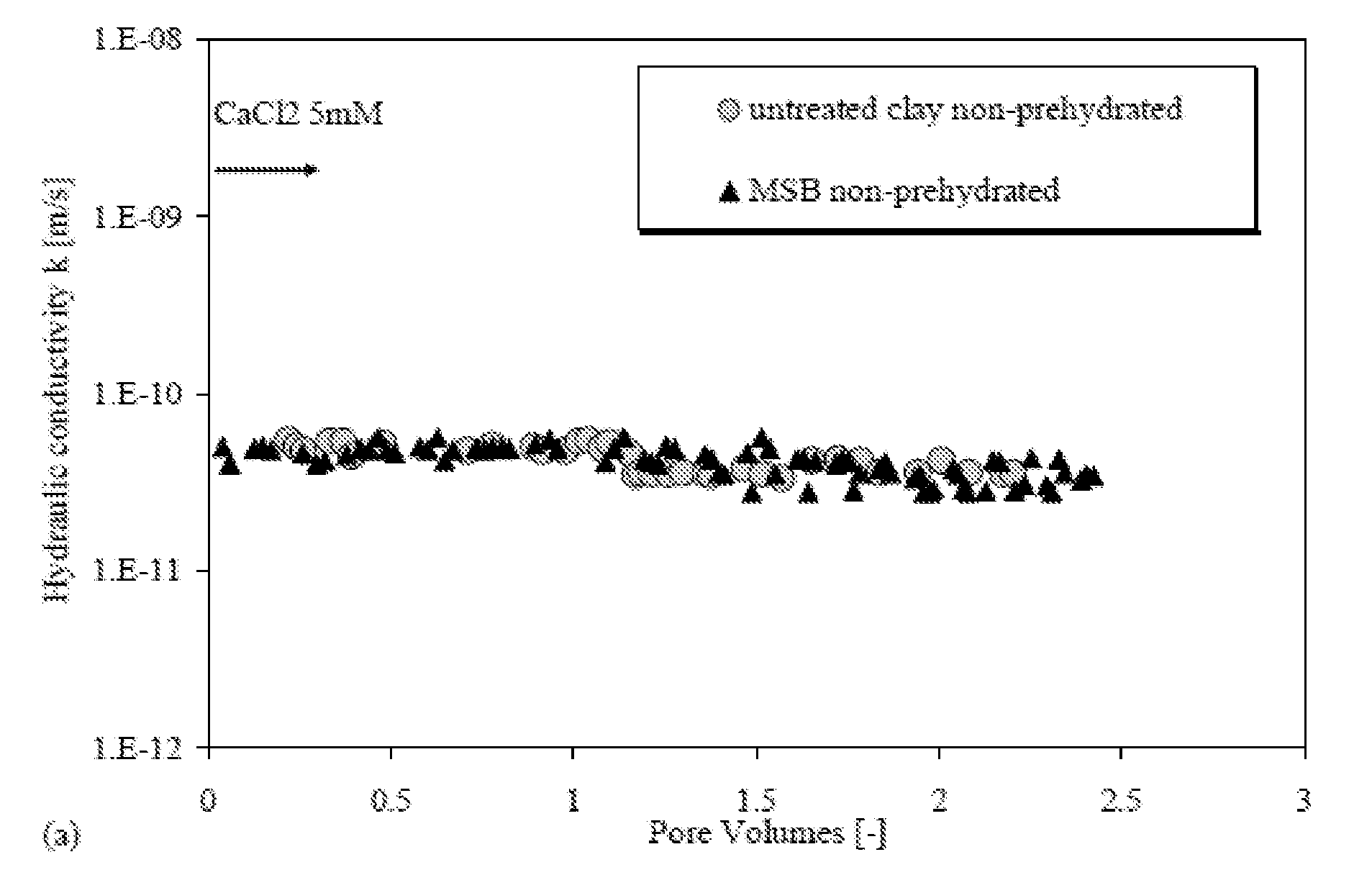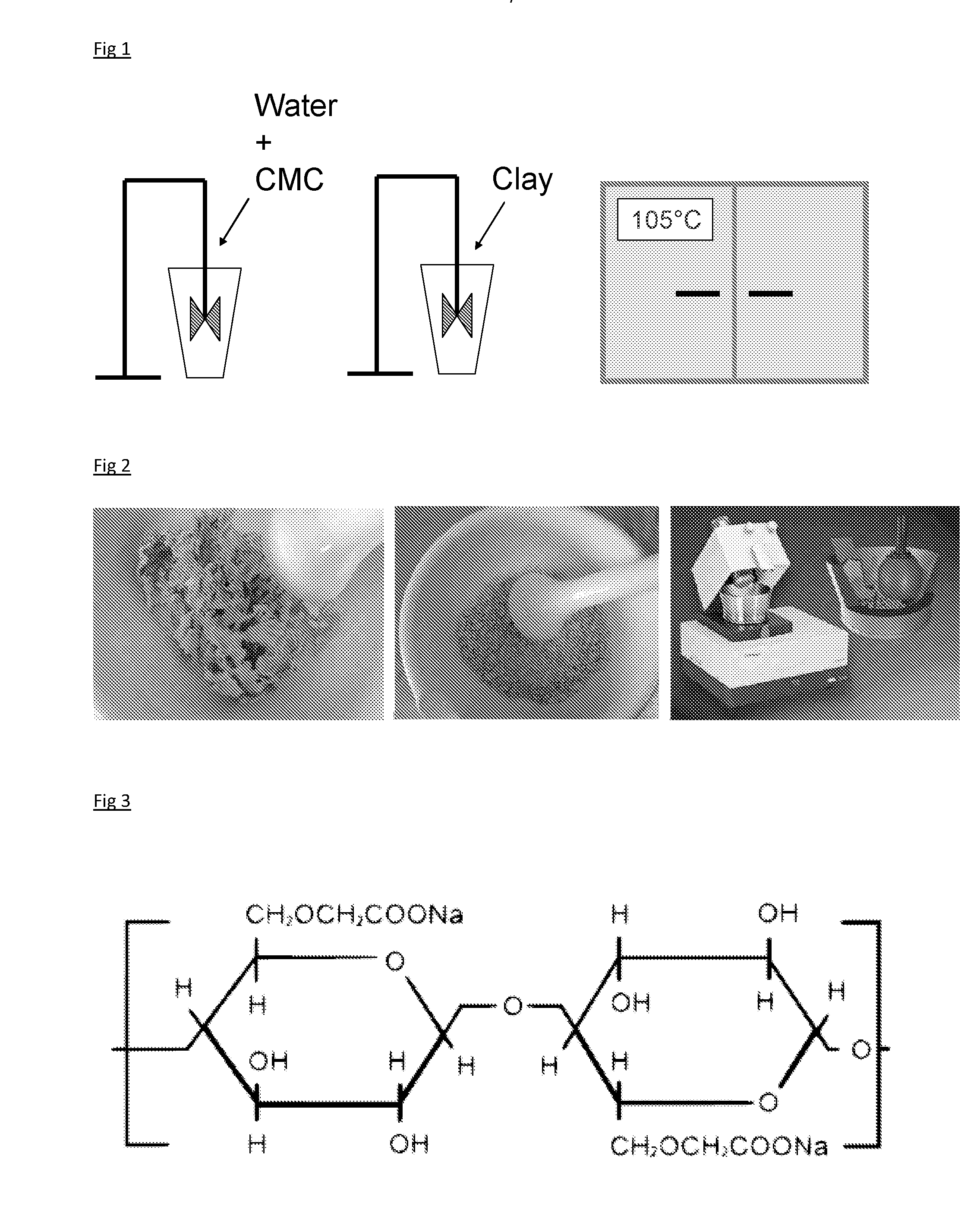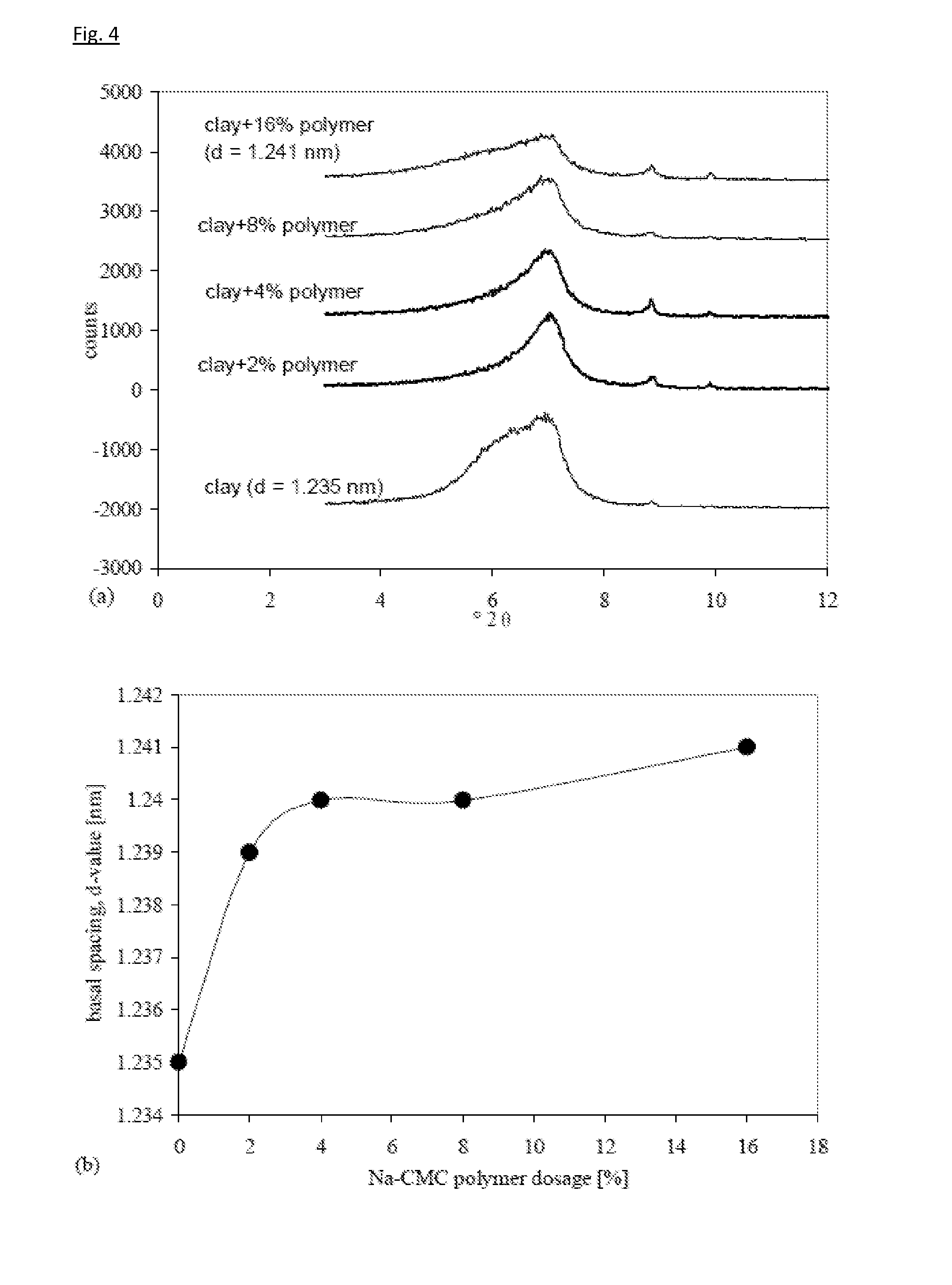Clayey barriers
a clayey barrier and clay technology, applied in the field of clayey barriers, can solve the problems of loss of clay efficiency, significant damage to the environment and human health, and contamination of leacha
- Summary
- Abstract
- Description
- Claims
- Application Information
AI Technical Summary
Benefits of technology
Problems solved by technology
Method used
Image
Examples
example 1
[0046]Methodology:
[0047]A chemical-resistant so-called ‘HYPER clay 2%’ (i.e. a clay of the invention treated with 2% Na-CMC) or engineered clay was obtained by treating a bentonite clay with 2% by dry weight of an anionic polymer, the Sodium Carboxymethyl Cellulose (Na-CMC). The clay was poured in a polymeric solution using a mechanical stirrer for 30 minutes. The slurries obtained were then oven dried at 105° C. This sequence of preparation is important to improve the long-term adsorption of the polymer on to the clay surface. After drying, the bentonites were ground using a mortar grinder.
[0048]Results:
[0049]An engineered clay (the so-called HYPER clay) was developed by adsorbing an anionic polymer to the surface of an untreated bentonite. Furthermore, two commercially available polymer treated clays were studied: a Multiswellable Bentonite (MSB) and a Dense Prehydrated GCL (DPH GCL). To demonstrate the potential benefits of polymer treatment, index properties and swelling ability...
example 2
[0067]FIG. 19 shows the hydraulic conductivity to seawater of a kaolin Rotoclay treated with the HYPER clay method with 2% CMC and 8% CMC. The kaolin was first mixed with the polymeric solution, then dried at 105° C. and finally grinded. As shown in the graph, the hydraulic conductivity to seawater of the kaolin treated with 8% CMC is lower compared to the hydraulic conductivity of the kaolin treated with 2% CMC. This result demonstrates that increasing the dosage of the CMC polymer, the hydraulic conductivity of the kaolin decreased.
example 3
[0068]FIG. 20 shows the hydraulic conductivity of a Dredged Sediment treated with 8% CMC compared to the hydraulic conductivity of the untreated Dredged Sediment. The Dredged Sediment was mixed with a polymeric solution, then dried in an oven at 45° C., then crushed (to granules size) by hand with mortar and pestle, finally compacted following ASTM D0698 to simulate a Compacted Clay Liner (CCL). As shown in the graph in FIG. 20, the hydraulic conductivity of the Dredged sediment was lower compared to the hydraulic conductivity of the untreated dredged sediment. This result demonstrates that the dredged sediment can be treated with the Hyper clay method and improve its hydraulic performance.
PUM
| Property | Measurement | Unit |
|---|---|---|
| temperature | aaaaa | aaaaa |
| temperature | aaaaa | aaaaa |
| temperature | aaaaa | aaaaa |
Abstract
Description
Claims
Application Information
 Login to View More
Login to View More - R&D
- Intellectual Property
- Life Sciences
- Materials
- Tech Scout
- Unparalleled Data Quality
- Higher Quality Content
- 60% Fewer Hallucinations
Browse by: Latest US Patents, China's latest patents, Technical Efficacy Thesaurus, Application Domain, Technology Topic, Popular Technical Reports.
© 2025 PatSnap. All rights reserved.Legal|Privacy policy|Modern Slavery Act Transparency Statement|Sitemap|About US| Contact US: help@patsnap.com



